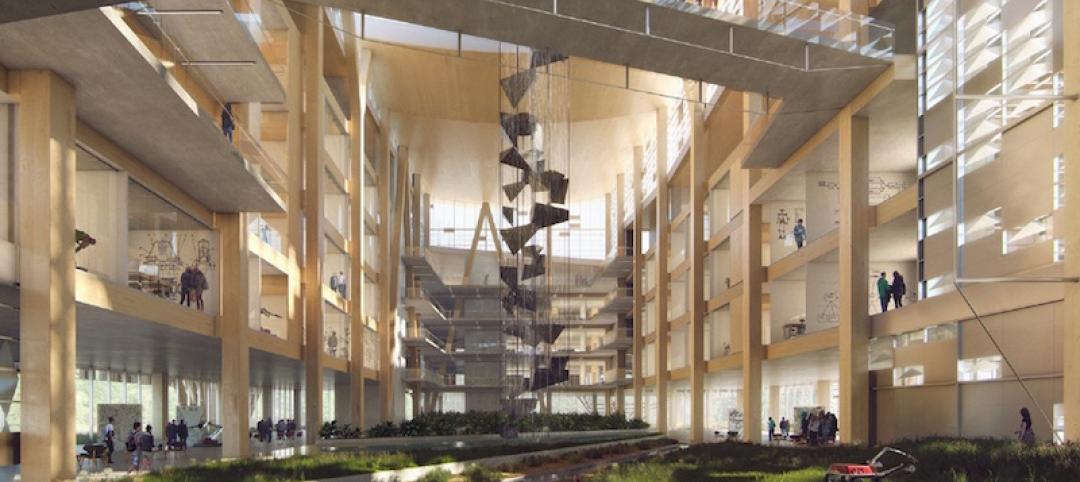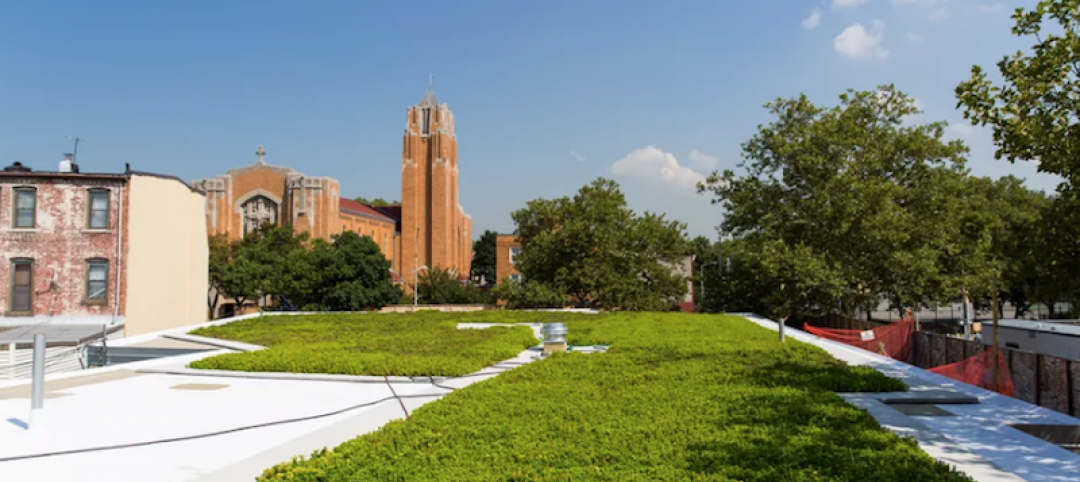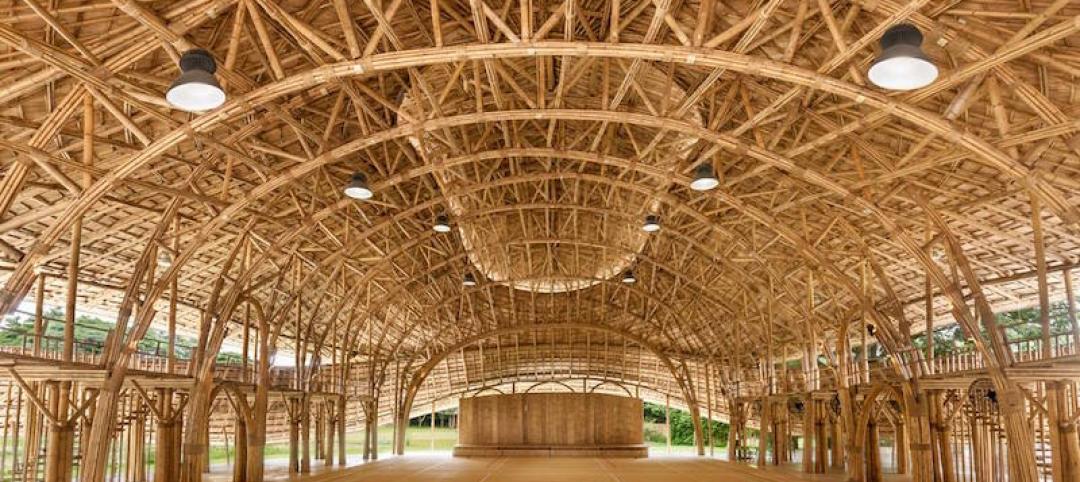Green Business Certification Inc. (GBCI) launched its newly acquired SITES rating system, the most comprehensive program and toolkit for developing sustainable landscapes.
SITES was developed through a collaborative, interdisciplinary effort of the American Society of Landscape Architects, The Lady Bird Johnson Wildflower Center at The University of Texas at Austin, and the United States Botanic Garden. The rating system can be applied to development projects located on sites with or without buildings, ranging from national parks to corporate campuses, streetscapes and homes, and much more.
“Landscapes knit together the fabric of our communities,” said Rick Fedrizzi, CEO, GBCI. “And sustainable landscapes are critical in their ability to reduce water demand, filter and reduce storm water runoff, provide wildlife habitat, reduce energy consumption, improve air quality, improve human health, and increase outdoor recreation opportunities. SITES is an important addition to our toolkit, and GBCI appreciates this opportunity to support this additional contribution to healthy, thriving communities and neighborhoods.”
The SITES rating system uses progressive industry standards for landscape design and incorporates additional recommendations from technical experts in the fields of soil science, botany and horticulture, hydrology, materials, and human health and well-being.
“It is exciting to see years of work developing and field testing SITES culminate with the availability of this rating system,” said Fritz Steiner, FASLA, dean of the School of Architecture at The University of Texas at Austin. “The depth and breadth of approaches that were implemented by pilot projects demonstrates how valuable SITES can become for revolutionizing our relationships with built landscapes.”
“Landscape architects and members of all the related design and planning fields know that the issues addressed in SITES are increasingly important to creating livable and resilient communities,” said Nancy C. Somerville, executive vice president and CEO of the American Society of Landscape Architects (ASLA). “GBCI will take SITES to the next level and ensure its future growth and influence, and ASLA is pleased to provide continued education and communications support.”
“SITES is a powerful tool for enhancing built landscapes precisely because it puts ecosystem services, the benefits humans derive from functional ecosystems, front and center,” said Ari Novy, executive director of the United States Botanic Garden. “This approach will help maximize our collective ability to create sustainable and healthy communities. Making SITES available through GBCI will be a great boon for the quality and resilience of our built landscapes.”
The SITES rating system uses progressive industry standards for landscape design and incorporates additional recommendations from technical experts in the fields of soil science, botany and horticulture, hydrology, materials, and human health and well-being. Some of the credits for sustainable landscape performance have been developed in alignment with similar credits in the U.S. Green Building Council’s LEED (Leadership in Energy and Environmental Design) rating system, the world’s most widely used green building program.
SITES, originally modeled after LEED, includes best practices in landscape architecture, ecological restoration, and related fields, as well as knowledge gained through peer-reviewed literature, case-study precedents, and projects registered in the SITES pilot program.
“Adding SITES to GBCI’s rapidly growing list of certification systems and credentials it supports not only expands GBCI’s capabilities, but it also helps us to further our mission to enact global sustainable change,” said Mahesh Ramanujam, president, GBCI.
SITES draws on the experience gained from a two-year pilot program involving more than 100 projects. Forty-six of these pilot projects have achieved certification, including landscape projects at corporate headquarters, national and city parks, academic campuses and private homes.
Interested project teams can visit sustainablesites.org for more information and to register their projects and access the SITES v2: Rating System For Sustainable Land Design and Development, a guide that provides best practices, performance benchmarks and tools for creating ecologically resilient landscapes and rewards successful projects through certification.
The Wildflower Center and ASLA will help GBCI create and implement SITES credentialing and certification offerings such as training project reviewers and will provide educational opportunities for pursuing SITES certification. GBCI owns exclusive rights to the SITES Rating System, its publications and trademarks.
Related Stories
Sustainability | Oct 9, 2017
New Arizona State University building will reach triple net-zero performance
The science and research complex will include an atrium biome filled with plants and water.
Sustainability | Oct 4, 2017
The solutions to climate change are already at our fingertips
To keep global temperature rise below 2 degrees Celsius of warming, the International Energy Agency (IEA) reports that the global buildings sector will need to decrease its total annual greenhouse gas contribution by 77% by 2050.
Green | Oct 2, 2017
Five strategies to improve energy performance in existing buildings
After performing retro-commissioning and energy audits for more than five million square feet of existing building real estate, we have developed a list of common low/no-cost Energy Conservation Measures (ECMs) that are identified on the majority of projects.
Green | Sep 27, 2017
Wellness gains ground with real estate and property management professionals
Structure Tone survey finds LEED is still a selling point, but interest in resilience practices could be waning.
Codes and Standards | Sep 12, 2017
Washington, D.C. is first LEED Platinum city in the world
All city government buildings are powered by renewables.
Green | Sep 12, 2017
Brooklyn’s Windsor Terrace Library gets a living roof
The roof was funded through a process that allows local residents to decide how City capital dollars are spent in their neighborhoods.
Green | Aug 24, 2017
Business case for WELL still developing after first generation office fitouts completed
The costs ranged from 50 cents to $4 per sf, according to a ULI report.
Libraries | Aug 18, 2017
Johnson Favaro-designed Lions Park project breaks ground in Costa Mesa
The project includes a new library, the renovation of the existing library, and the redevelopment of parkland.
Mixed-Use | Aug 15, 2017
A golf course community converts into an agrihood with 1,150 homes and a working olive grove
The community will cover 300 acres in Palm Springs, Calif.
Green | Aug 11, 2017
A school’s sports hall is created entirely from bamboo
The building boasts a zero-carbon footprint and is naturally ventilated.
















